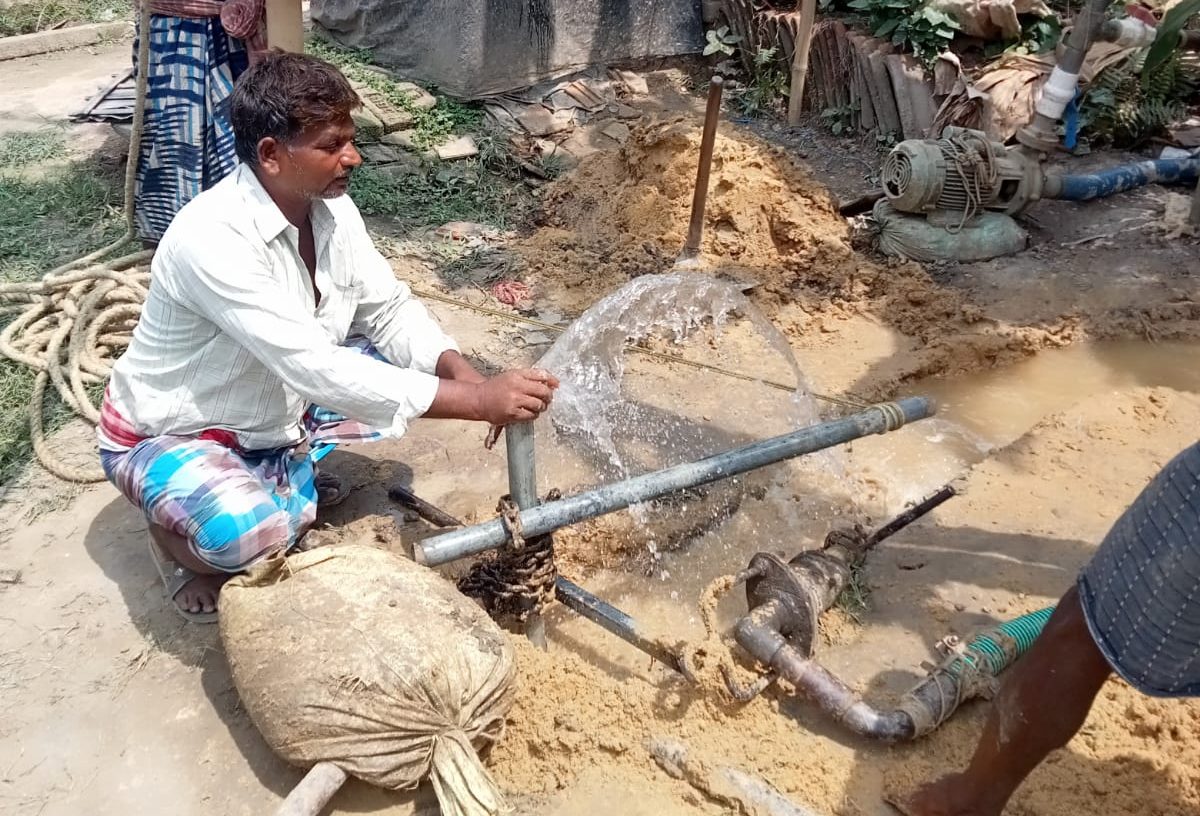The State Project Management Unit_NHP, SWID, Govt. of West Bengal undertook a work to determine the aquifer parameters (Transmissivity (T) & Storativity (S) values) under the National Hydrology Project. The work involves conducting aquifer performance tests in different hydrogeological settings across various districts of West Bengal. The objective is to assess the groundwater resources and ensure sustainable management and utilization.
Observation wells were constructed at each site to monitor water levels. The objective was to observe water level changes during pumping and recuperation after stopping the pump. The wells were constructed at strategic locations/ same granular zone as the main pumping wells.
Overview of how an aquifer performance test is typically conducted:
- Selection of Test Well: A test well is drilled or an existing well is chosen in the area of interest. This well should penetrate the aquifer of interest.
- Pump Setup: A submersible pump or other suitable pumping equipment is installed in the well. The pump is used to extract groundwater from the aquifer.
- Data Collection: During the test, various measurements are taken to assess the aquifer’s performance, including:
- Drawdown Measurements: The depth to the water table in the well is continuously monitored as the pump operates. The water level will decrease due to pumping, and this drawdown data is critical for analysis.
- Flow Rate: The rate at which water is pumped from the well is recorded. This is usually measured in liters per second (L/s) or gallons per minute (GPM).
- Test Duration: The test typically lasts for several hours to several days.
- Data Analysis: The collected data is analyzed to determine various hydraulic properties of the aquifer. Key parameters include:
- Transmissivity (T): This parameter measures the ability of the aquifer to transmit water. It is calculated using the relationship between drawdown and time.
- Hydraulic Conductivity (K): This is a measure of the ability of the aquifer material to transmit water and is closely related to transmissivity.
- Storativity (S): This parameter represents the storage capacity of the aquifer and is calculated from the drawdown data.
- Specific Capacity (SC): It is a measure of the well’s efficiency in yielding water and is calculated by dividing the flow rate by the drawdown.
- Interpretation: The results of the aquifer performance test are used to make informed decisions about estimating the sustainable yield of the aquifer, designing efficient well systems, and assessing potential impacts on surrounding wells and surface water bodies.
- Reporting: The findings and results of the test are typically documented in a report, which may be used for regulatory compliance, water resource planning, and well design.
Aquifer performance tests are essential for understanding the characteristics and limitations of groundwater resources. They provide valuable information for water resource management, including well construction and management, groundwater modeling, and environmental impact assessments.
